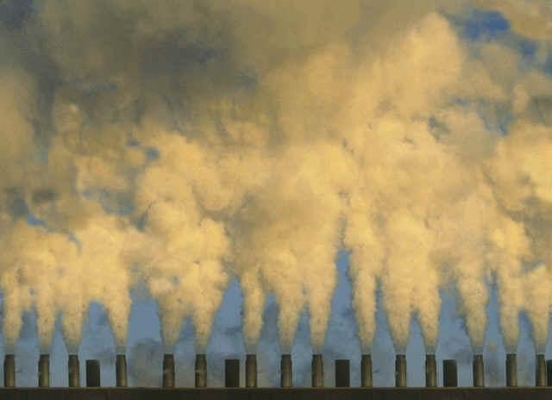Controlling air pollution, reducing pollutants in the air is important for human health and the environment with the help of Air Pollution Control Equipment. Poor air quality has harmful effects on a human being. Pollutants can also damage environments such as plants and buildings, and smoke or haze can reduce visibility.
Pollution control is the process to capture pollutants through the pollution controlling equipment before the wastage being removed in the atmosphere. eg. The harmful pollutant particles containing gases are passed through the bag filter to remove the chemical particles being filtered into the baghouse before releasing gases into the atmosphere.
An effective air pollution control system in India is essential in today’s industrial landscape because of the growing air pollution in the country is its effects on the health of individuals. Exposure to particulate matter for a long time can lead to respiratory and cardiovascular diseases such as asthma, bronchitis, lung cancer, and heart attacks.
PRAKRRITI have a team of dedicated mechanical engineers along with chemical engineers to design the system to suit client requirements, fulfil responsibility towards nature and to the best satisfaction of the client. Our technical team in collaboration with channel partners manufactures the system under a strict quality policy. We have a dedicated team of people for the installation and commissioning of the system globally.
Settling chambers
![]()
Gravity settling chambers are the oldest and simplest means of removing suspended particles from a gas and solid particles in waste materials. The gas stream enters into a chamber where the velocity of the gas is reduced. Large particles drop out from the gas and are recollected in hoppers. The effective settling chambers are used for larger particles removing, they are used in conjunction with a more efficient control device.
Cyclones
![]()
The main principle of inertia separation is that the particulate-laden gas is forced to change direction. As gas changes direction, the inertia of the particles causes them to continue in the original direction and be separated from the gas stream. The walls of the cyclone narrow toward the bottom of the unit and allowing the particles to be collected in a hopper. The cleaner air leaves the cyclone through the top of the chamber, flowing upward in a spiral vortex, formed within a downward moving spiral.
Condensation
![]()
Condensation is the process of converting gas or vapour to liquid. Any gas can be reduced to a liquid by lowering its temperature and increasing its pressure. Condensers are typically used as pre-treatment devices. They can be used onward of absorbers, adsorbers, and incinerators to reduce the total gas volume to be treated by more expensive control equipment. contact condensers and surface condensers are used for pollution control.
- In a contact condenser, the gases come and contact with cold liquid.
- In a surface condenser, the gas contacts a cooled surface in which cooled liquid or gas is circulated, such as the outside of the tube.
Incineration
Incineration, also known as combustion, it is mostly used to control the emissions of organic compounds from process industries. This technique refers to the rapid oxidation of a substance through the combination of oxygen and combustible material in the presence of heat. When combustion is complete, the gaseous stream is converted to carbon dioxide and water vapour.
Equipment used to control waste gases by combustion can be divided into following three categories:
Direct combustion or flaring
Direct combustor/flaring is a device in which air and all the combustible waste gases react at the burner. Complete combustion must occur instantaneously since there is no any residence chamber. A flare can be used for controlling almost any emission stream containing volatile organic compounds. With the help of Studies which is conducted by EPA have shown that the destruction efficiency of a flare is about 98%
Thermal incineration
In thermal incinerators, the combustible waste gases pass over or around a burner flame into a residence chamber where oxidation of the waste gases is completed. Thermal incinerators can destroy gaseous pollutants at efficiencies of greater than 99% when it operated correctly.
Catalytic incineration
Catalytic incinerators are very similar to thermal incinerators. The main difference is that after passing through the flame area, the gases pass over a catalyst bed. A catalyst promotes oxidation at lower temperatures, thereby fuel costs are reducing. Using a catalytic incinerator, Destruction efficiencies greater than 95% are possible.
Dust Collector
Dust collectors or a Dust collector system is a device or a set of arrangements to collect dust from industrial sources via hood and transport it to dust filtering or cleaning device via Ducts. At air cleaners, the dust is removed from the air stream using various methods, and finally, filtered air is passed to the atmosphere via an Industrial blower.
To know more, please check Prakrriti.




